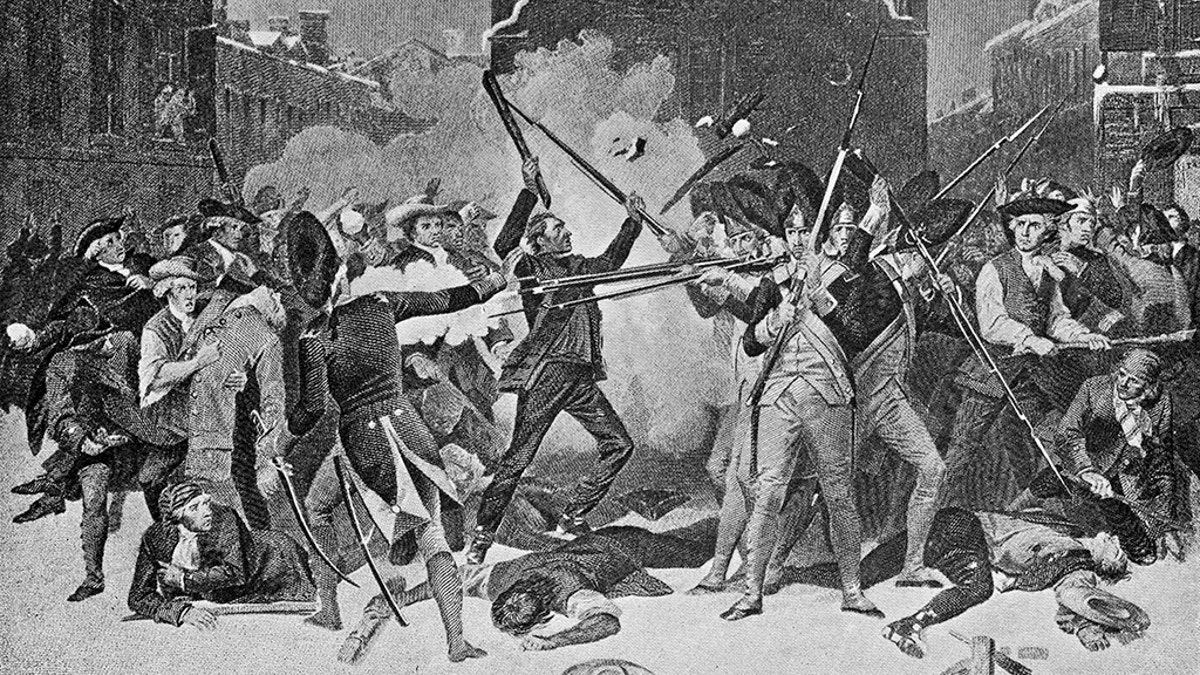On March 5, 1770, a turning point in the American colonist’s efforts to oust the occupying British from the 13 colonies took place – the Boston Massacre.
Two hundred fifty years ago, American Revolutionary War heroes – including future U.S. President John Adams, Paul Revere and Samuel Adams – all played signature roles.
The watershed moment took place as colonists grew weary of occupying British soldiers in the city and began throwing snowballs, stones and sticks at the soldiers. An 11-year-old boy named Edward Garrconfronted British Pvt. Hugh White, saying White had refused to pay a bill to a wigmaker.

Image from 1896 showing the Boston Massacre in 1770 which was part of the American Revolutionary War. (iStock)
The confrontation led to a scuffle which ended when White struck Garrick with his musket in the head, drawing the attention of other colonists.
As time went on, the colonist mob grew and the mob rioted and attacked a British sentinel.
Tensions rose as British Capt. Thomas Preston called in additional soldiers from the 29th Regiment and the mob attacked. British soldiers fired into the mob, killing three colonists – a black sailor named Crispus Attucks, ropemaker Samuel Gray and a mariner named James Caldwell – and injuring eight others, two who died later named Samuel Maverick and Patrick Carr.
At a town meeting after the incident, colonists demanded British troops withdraw and a trial for Preston and his men.
Acting Gov. Thomas Hutchinson was called to the scene and was able to restore a semblance of order by promising there would be a fair inquiry into the incident.
Defending the soldiers were Adams and Josiah Quincy II and the soldiers were acquitted and released. Opposing them were prosecutors Samuel Quincey and Robert Treat Paine.

This vintage watercolor engraving features a massacre in Boston during the American Revolution. (iStock)
In the end, two of the soldiers were found guilty of manslaughter.
The Boston Massacre was a key event leading to the Revolutionary War as the Royal Governor evacuated his troops from Boston.
The result of the withdrawal was it lead directly to armed rebellion by the colonists throughout the colonies.
Paul Revere produced a series of politically themed engravings and artifacts to support the dissident movement, including a famous depiction of the Boston Massacre. The cartoon contained the inscription “Engraved, Printed & Sold by Paul Revere Boston” and was modeled after a drawing by Henry Pelham.

